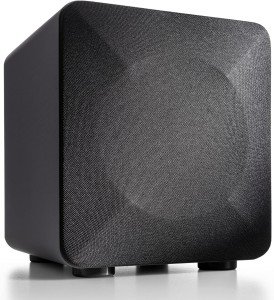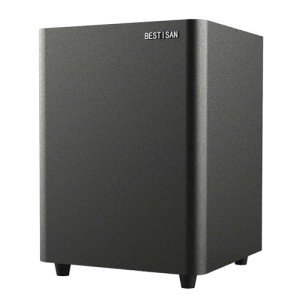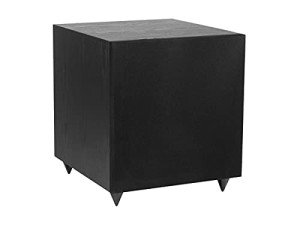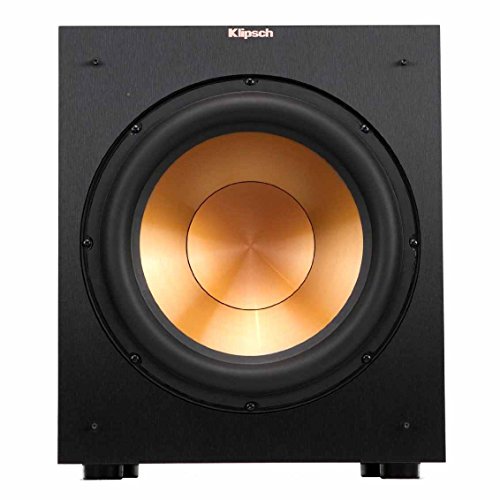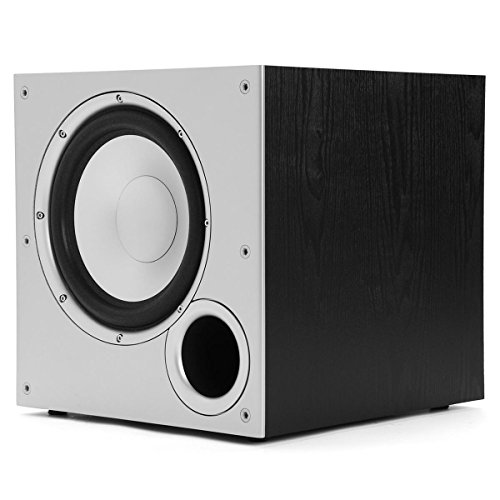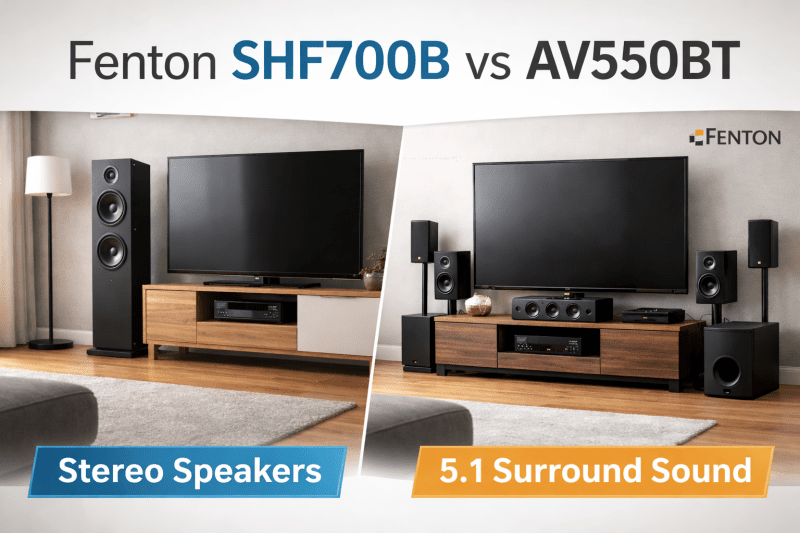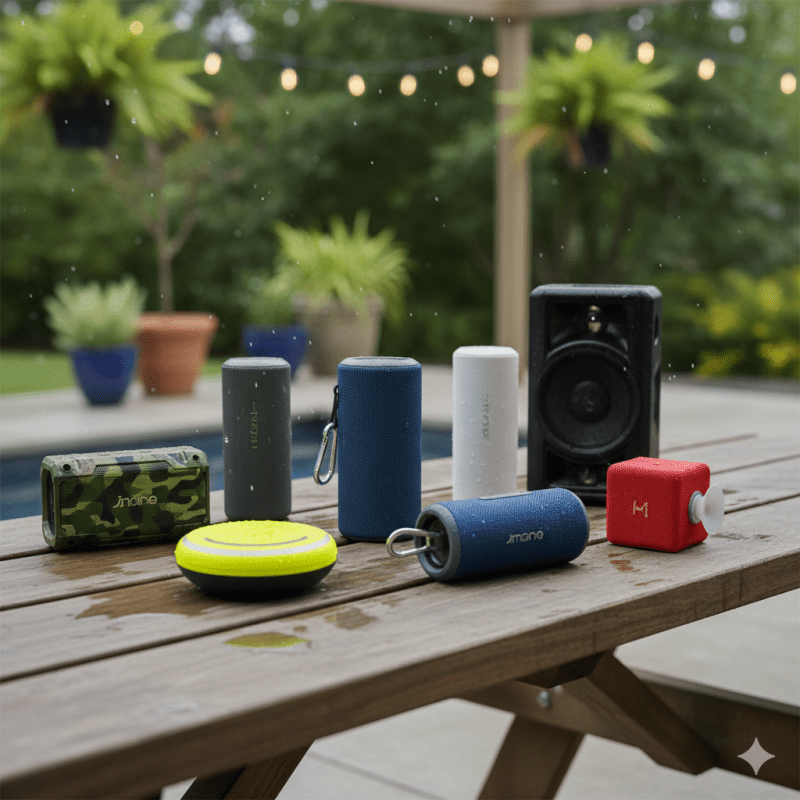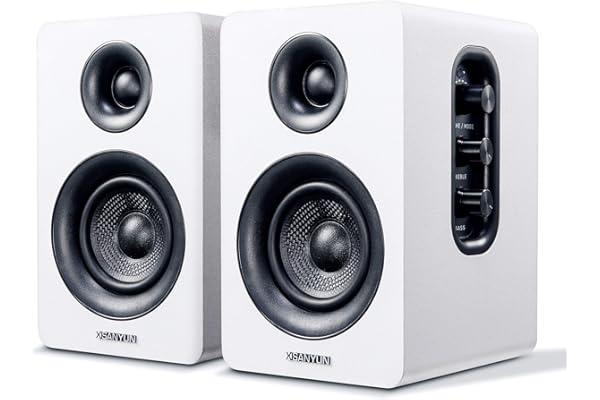The Science Behind Powered Subwoofers: How They Enhance Your Audio Experience
When it comes to audio systems, powered subwoofers have become an essential component for any music lover. They are specifically designed to reproduce low-frequency sound waves that regular speakers cannot handle. But how do they work, and what makes them so important to your audio experience? Let’s take a closer look at the science behind powered subwoofers.
Frequency Response
The first thing to understand is frequency response. This refers to the range of frequencies that a speaker can accurately reproduce. Regular speakers are usually designed to produce mid-range and high-frequency sounds, which range from 100 Hz to 20 kHz. However, they are unable to produce the low frequencies below 100 Hz, which is where a powered subwoofer comes in.
Subwoofers are designed to produce low frequencies, specifically those below 100 Hz. These frequencies are felt more than heard, but they add depth and body to music, especially for genres like hip-hop, EDM, and rock. By adding a subwoofer to your system, you can enhance the sound quality of your favorite songs and enjoy a more immersive audio experience.
Sizing and Amplification
The size and power of a subwoofer can greatly impact its performance. Subwoofers come in a variety of sizes, usually ranging from 8 inches to 18 inches in diameter. The larger the subwoofer, the more air it can move, which means it can produce louder and deeper bass sounds. However, larger subwoofers can also be more expensive and take up more space in your room.
Another important factor to consider is amplification. Powered subwoofers have built-in amplifiers, which means they can power themselves without the need for an external amplifier. This allows them to be more self-contained and easier to set up. The power output of a subwoofer can also affect its performance, with higher wattage resulting in louder and more impactful bass sounds.
Room Acoustics
The last thing to consider is the acoustics of your listening room. The placement of your subwoofer can greatly affect its sound quality. Subwoofers perform best when placed in corners or against walls because this allows the bass sounds to reflect and reverberate around the room. However, if placed in the wrong spot, subwoofers can produce muddy and boomy bass sounds.
Additionally, the size and shape of your listening room can affect how your subwoofer sounds. Rooms with hard surfaces like concrete or hardwood floors can reflect sound waves and create unwanted echoes. To combat this, you can add acoustic treatments like rugs or curtains to help absorb and dampen sound waves.
In conclusion, powered subwoofers are an essential component to any audio system. They are designed to produce low-frequency sound waves and enhance the overall audio experience. By understanding the science behind subwoofers, you can choose the right size and power output for your room and enjoy richer and more impactful bass sounds.
Choosing the Right Powered Subwoofer: Factors to Consider for Optimal Sound Quality
When it comes to choosing a powered subwoofer, there are a number of important factors to consider that will help you achieve optimal sound quality. Here are some key considerations to keep in mind:
1. Room size and acoustics
The size of your room and its acoustic properties will greatly impact the performance of your subwoofer. A smaller room with lots of soft surfaces (e.g. carpeted floors, curtains, upholstered furniture) will generally produce more bass than a larger room with hard surfaces (e.g. tile or hardwood floors, bare walls). Be sure to take measurements of your room and consider its layout when selecting a subwoofer, as this will help you determine the appropriate size and power output.
2. Frequency response
The frequency response of a subwoofer refers to the range of frequencies it is capable of producing. Look for a subwoofer with a frequency response that complements your other speakers. For example, if you have bookshelf speakers with a frequency response that begins at 80Hz, you'll want a subwoofer that can produce bass frequencies down to 80Hz or lower.
3. Power output
The power output of a subwoofer is measured in watts and determines how loud and how low the subwoofer can play. A higher power output means more volume and better bass response, but be careful not to overpower your other speakers. Ideally, the subwoofer should be matched with the power output of your other speakers for optimal performance.
4. Cone size and type
The cone size and type of a subwoofer will also impact its performance. A larger cone will generally produce more bass than a smaller one. Subwoofers with cones made of materials like aluminum or Kevlar tend to be more rigid and responsive, while those made of materials like rubber or foam are more flexible and forgiving. Ultimately, the best cone size and type will depend on your personal preferences and listening environment.
5. Brand reputation and customer reviews
Finally, it's worth considering the reputation of the brand and reading customer reviews when selecting a powered subwoofer. Look for brands with a good reputation for quality and reliability, and pay attention to what other customers have to say about the subwoofer's sound quality, ease of use, and overall performance.
By keeping these factors in mind, you'll be well on your way to choosing a powered subwoofer that delivers the best possible sound quality for your listening space and preferences.
Installation and Maintenance of Powered Subwoofers: Tips for Longevity and Performance
When it comes to powered subwoofers, installation and maintenance are key factors in ensuring their longevity and performance. Here are some tips to help you get the most out of your powered subwoofer:
Installation
1. Choose the right location: The location of your subwoofer can have a significant impact on its performance. Ideally, you want to place the subwoofer in a corner or against a wall, as this will help to reinforce the bass frequencies. However, you also want to make sure that the subwoofer is not too close to a wall or corner, as this can cause the bass to become boomy or muddy. Experiment with different positions until you find the sweet spot.
2. Calibrate the subwoofer: Once you have found the optimal location for your subwoofer, you need to calibrate it. This involves adjusting the volume, crossover frequency, and phase so that the subwoofer blends seamlessly with your main speakers. Most modern subwoofers come with an auto-calibration feature that makes this process much simpler.
3. Use the right cables: Make sure you use high-quality cables to connect your subwoofer to your amplifier or receiver. Poor-quality cables can cause signal loss or interference, which can degrade the sound quality.
Maintenance
1. Keep it clean: Over time, dust and debris can accumulate on the subwoofer's driver and ports, which can affect its performance. Make sure you clean the subwoofer regularly using a soft brush or cloth.
2. Check the connections: Inspect the cables and connections regularly to make sure they are free from damage or corrosion. Loose or damaged connections can cause intermittent sound or complete failure.
3. Avoid overloading: While it may be tempting to crank up the volume and push your subwoofer to the limit, this can cause damage to the driver or amplifier. Always follow the manufacturer's guidelines and never exceed the recommended power output.
By following these simple tips, you can ensure that your powered subwoofer delivers the best possible performance for years to come.
Audioengine S6 Compact 210W Powered Subwoofer - Grey
Experience deep, powerful bass that transforms your home audio setup with the Audioengine S6 Compact subwoofer
Product information
$699.99 $208.88
Product Review Score
4.24 out of 5 stars
151 reviewsProduct links

